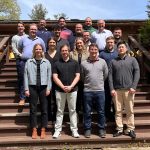
More information about Gibson’s Global Product Migration and Assembly Re-location Assessments & Implementation Experience
Many Global OEM and multinational consumer product corporations are embarking on a journey of transformation relative to establishing rooftops and manufacturing operations in North America to reduce global supply chain risks and be closer to the end-user/customer. Multinational Fortune companies want to continue to build on strengths/core competencies and further enhance their capability to capture savings quickly and, more importantly, capture the “value “from their global supply chain. Given the continuing focus on operational improvement, margin enhancement, and product innovation (speed to market, brand excellence in exceptional features and options for customers). Gibson’s diagnostic opportunity assessment is key to recommending the product categories and families which are best suited or transition or migration to Mexico. In this regard, Gibson Consulting will conduct a comprehensive diagnostic opportunity assessment that will identify the categories, the saving ranges (by region, by segment and by business unit), as well as timelines, resources, and skill-based training needed to implement the savings and capture the value the quickest for our clients & business units. At the conclusion of the diagnostic opportunity assessment, Gibson will outline, recommend and prioritize the “product categories” or “product families” and put a senior team on these categories to help clients jumpstart the Implementation Project in order to build momentum, early adoption in order to gain traction (options of SKUs/product families) and how multi-purpose and shared rooftop captures the benefits of common ownership. We will introduce the data driven process gates, by way of skill-based training, tools, and provide step-by-step implementation, working with cross functional/regional client professionals.
What’s this mean? Bottom-line, this opportunity assessment will enable us to answer three fundamental questions which enables readiness or implementation should client executive leadership teams (ELT) decide to move forward with implementation:
- What are the Saving Opportunities by Product Category/Family, by Segment, by Region?
- How do we know these Savings Exist? We will offer proof/evidence of the savings. We noted in previous conference calls that other consulting firms use general rules of thumb and provide generic, broad spectrum 10% savings/synergy benefit numbers which are not evidenced based. Thus, we will provide clients the savings roadmap detailing the savings by product category/family, by sub-category, by segment, by region by site with the associated proof/evidence that the savings exist because we examine line-item detail and the technical specs, tooling, and potential or black magic, undisclosed deviations which never get recorded on the drawing or spec.
Example: Diagnostic
| A. How Do We Know the Savings Exists? | B. Detailed Savings Summary |
|---|---|
|
|
- How do we (Client/Gibson Team) capture, implement, realize, and sustain the savings benefit which is usually measured by EPS Contribution & Margin Improvement? Simply stated, the savings is captured via a data driven, gated process, with integrated, practical Skill-Based Training designed to enhance the organization’s skill so enterprise procurement (strategic migrating/establishing assembly & product Categories) personnel can effectively communicate and negotiate with Supplier CEOs. We will also be working onsite in the field where Senior Gibson Professionals will be working directly with clients on the Product Category/Family teams at client’s corporate & business unit sites, helping your teams execute the process as well as the block & tackle. This includes: identifying and vetting new world-class suppliers or Bill of Material Localization (which could be new concept for sustaining engineering dept), building out the technical/commercial profiles, performing the supplier due diligence and preparing (as well as training methodically) the teams for executive supplier negotiations. Bottom-line, we will be working side-by-side with your cross-functional/regional teams, executing each process gate with surgical precision to capture, realize and sustain the value, improving margins & EPS, improving continuity of supply and reducing global supply chain risks.
At the conclusion of the opportunity assessment, Gibson will provide our Client the following:
- An overall Global Strategic Migrating/Establishing Assembly & Product Categories Transformation Roadmap
- Quantified Global Strategic Migrating/Establishing Assembly & Product Categories Savings by Product Category/Family
- Detailed process roadmap including Product Category/Family implementation waves and savings roll-out plan by spend Product Category/Family, by business segment, and by region
- Cost reduction opportunities resulting from sustaining process improvements
- Detailed spend data accumulation, classification, analysis and benchmarking relative to our Client’s current state of enterprise procurement to a proposed future state including leveraging common spends and integrating best practice Migrating/Establishing Assembly & Product Categories methodologies, tools, technology, and training
- Organizational design & development recommendations for BCC Migrating/Establishing Assembly & Product Categories & Warehousing functions for the Rooftop
- Review of systems, tools, and technology to support and sustain the Rooftop
- Migrating/Establishing Assembly & Product Categories and inbound logistics for raw materials. Components and subassemblies as well as Outbound Finished Product and intra/intercompany benefits or common modes/lanes with suppliers and customers.
- Assess current personnel skill levels and develop a training curriculum in skill-based courses
- Recommended process enhancement opportunities, strategies and training related to enterprise Strategic procurement & global supply chain
Finally, Gibson understands the complications with establishing new operations in foreign countries including Mexico. Moving light assembly is just one very small piece to a much larger, more complicated puzzle. For example, the indented and exploded bill of material (BOM) and its associated tooling (including IP rights/condition) and tear downs are critical. The BOM review is concentric/focused (depending of level of assembly) and, most often, you will lose some ability to leverage the entire product category/family, because you are focusing on component-level migrating/establishing assembly & product categories vs. product category/family-wide migrating/establishing assembly & product categories. Thus, selecting a family of parts and conducting ‘global product category/family migrating/establishing assembly & product categories’ allows you to do both the BOM, product cost take out (PCTO) as well as leverage the entire product category/family spend across multiple segments with suppliers globally. There is a Reverse BOM (or reverse engineering) approach using material science to ascertain chemical composition, mechanical properties, surface finish while concurrently analyzing critical dimensions/critical parameters, undisclosed deviations to specifications & tolerances (GD&T). The key here is simple, get the alliance suppliers to fund this type of teardown analysis and approach (via various slotting allowances) whereby suppliers provide funding or provide their top engineers, dedicated labs and support team, provide machine/equipment for testing, validation, ORT, and FMEA. These suppliers have process (sustaining) engineers and design (advanced) engineers which can identify and help with VA/VE via supplier development & innovation “SD&I”. For example, we did this with Porsche Consulting at Caterpillar in Germany with Supply Chain Engineers (not SQAs) by comparing multiple competitor components, subassemblies, and applications. Another way to accomplish this analysis is by integrating the sustaining and the advancing engineering teams through a program called SD&I, where multiple suppliers are involved and it becomes Best Idea Wins in re-design, alternative materials, product substitutes, gauge reduction, shape conversion, manufacturing/process changes, etc. Regardless of the approach, vertical analysis, or horizontal analysis, once you have meaningful data, the key is turning this data into valuable information which can be leveraged via a factual data-driven, process. Gibson has an entire course on this SD&I approach, and how it is accomplished in concert with the 11 Gate Migrating/Establishing Assembly & Product Categories Process for making products cheaper, better, and/or faster.

Taylor Whitney
Partner
Gibson Consulting





